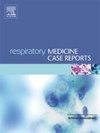利比亚首次报道dnai2相关的原发性纤毛运动障碍:一例来自非近亲婚姻
IF 0.7
Q4 RESPIRATORY SYSTEM
引用次数: 0
摘要
原发性纤毛运动障碍(PCD)是一种常染色体隐性遗传病,由纤毛运动结构和功能缺陷引起,影响纤毛黏液清除。这一缺陷使这类患者容易发生肺部感染。慢性咳嗽是一个关键症状,进行性支气管扩张是一种常见的伴随症状,尽管诊断延迟,诊断时的平均年龄约为11岁。最近的研究表明,PCD具有高度的遗传异质性,迄今已鉴定的PCD基因超过50个。在这里,我们描述了一个11岁的儿童,患有PCD的临床和放射学特征,来自一个非近亲家庭,基因检测显示DNAI2有罕见的纯合突变。本病例强调了对有复发性不明原因呼吸道感染病史的儿童高度怀疑PCD的重要性。在分子水平上快速诊断这种新疾病的能力对于早期和特异性治疗具有重要意义,并强调了临床医生和家庭之间密切合作对有效护理和控制患者的重要性。我们的研究结果支持将综合基因检测纳入第一级诊断方法,以加快准确诊断PCD的时间。本文章由计算机程序翻译,如有差异,请以英文原文为准。
First report of DNAI2-associated primary ciliary dyskinesia in Libya: A case from a nonconsanguineous marriage
Primary ciliary dyskinesia (PCD) is an autosomal recessive condition resulting from defects in motile cilia structure and function, impairing mucociliary clearance. This defect predisposes such patients to frequent sinopulmonary infections. The chronic productive cough is a key symptom, with progressive bronchiectasis as a common accompaniment, although diagnosis is delayed, with the mean age at diagnosis being about 11 years. Recent studies have indicated that PCD is highly genetically heterogeneous with more than 50 PCD genes identified to date. Herein, we describe an 11-year-old child with clinical and radiologic characteristics of PCD, from a non-consanguineous family, in whom genetic testing indicated a rare homozygous mutation in DNAI2. This case emphasizes the importance of a high level of suspicion of PCD in children with a history of recurrent, unexplained respiratory infections. The ability to diagnose this new disease at the molecular level rapidly is significant for early and specific treatment, and emphasizes the critical importance of a close cooperation between the clinicians and the family for effective care and control of the patient. Our results support inclusion of comprehensive genetic testing in the first tier diagnostic approach to accelerate the time to accurate diagnosis of PCD.
求助全文
通过发布文献求助,成功后即可免费获取论文全文。
去求助
来源期刊

Respiratory Medicine Case Reports
RESPIRATORY SYSTEM-
CiteScore
2.10
自引率
0.00%
发文量
213
审稿时长
87 days
 求助内容:
求助内容: 应助结果提醒方式:
应助结果提醒方式:


